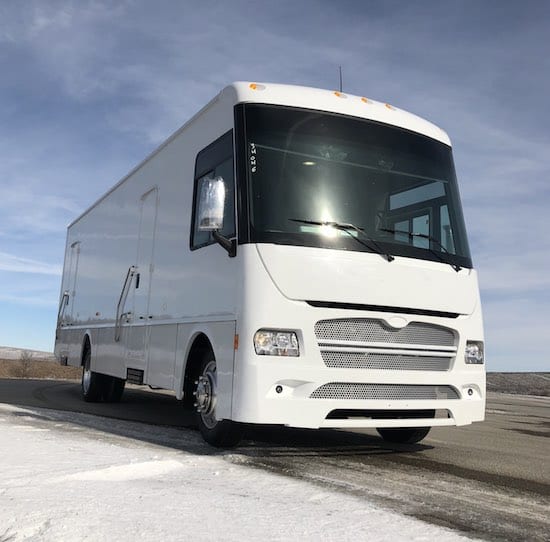Promising news this week for green-minded grey nomads, and other #vanlife devotees, with the announcement from iconic recreational vehicle maker Winnebago that it is launching an all-electric RV platform.
The American company whose name is synonymous with motorhomes said on Monday that it had partnered with Motiv Power Systems to develop an all-electric/zero emissions commercial vehicle.
But while these electric RVs are big – available at 10m and 12m in length (pictured above) – Winnebago stresses that they are not quite an electric motor home. And this seems to come down to range.
According to the company, significant road testing has been conducted on the electric commercial vehicle, and has found that the six to eight batteries can deliver a range of between 85 to 125 miles (136-201km) on a full charge.
So while Winnebago’s electric commercial vehicle offers the option for slide rooms, air-conditioning, solar panels, inverters, power back-up systems, toilets, showers, and other plumbing, it is not recommended for epic family road-trips, just yet.
Says Winnebago, “the vehicle is suited for urban and semi-urban short range commercial applications like mobile medical clinics, bloodmobiles, mobile classrooms and mobile outreach vehicles.”
The news is nonetheless exciting, as the shift to electrified transport spreads across more and more vehicle manufacturers, and extends to more and more different vehicle types – like Elon Musk’s game-changing Tesla Semi, which would have a range of 500km, or even 800kms.
And that strongly suggests that a fully-electric, proper Winnebago motorhome that can travel distances could not be far off.
“Winnebago Industries is a company that is focused on creating customer value through innovation and technology,” said Ashis Bhattacharya, head of Winnebago’s specialty vehicles division.
“We have a rich history of product and feature innovation, and we are continuously evaluating new and emerging technologies to further that legacy.
:We believe that all-electric vehicle applications continue to evolve to serve numerous end-user needs and this is our first step as a participant in this space.”











